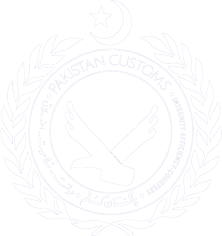If You Need Any Help ?
Email or Call us :
Historical Background
HM Coastguard owes its origins to the efforts made to combat smuggling throughout the 17th and 18th centuries. The Board of Customs and the Board of Excise were responsible for the prevention of the evasion of duty by smuggling and by the end of the 17th century they had a small fleet of boats and a few men on the coast. The service was expanded throughout the 18th century with the use of the naval vessels, revenue cruisers, dragoons and a shore based mounted force called Riding Officers. Despite these efforts, it was estimated that towards the end of the 18th century, about two thirds of the brandy drunk in this country had been smuggled in.
The aid given to Napoleon by the smugglers spurred the government to strengthen the preventive forces and a Preventative Water Guard was established in 1809. The coast was divided into three divisions, Carlisle to Landsend, Landsend to North Foreland and North Foreland to Berwick. Naval Officers with the title of Inspecting Captains were appointed to each division with this title and given command of a small fleet of cruisers and boats.
The end of the Napoleonic War saw the discharge of 300,000 soldiers and sailors who provided a fertile recruiting ground for the smugglers. Further measures were therefore necessary and the preventative forces were strengthened and reorganised and 'Land Waiters', 'Tide Waiters' and 'Searchers' were employed on customs work. In 1816 the Preventative Water Guard was made responsible to the Treasury, they appointed Captain Hanchett RN as Comptroller General of the force. The preventative cruisers came under the Admiralty and Riding Officers under Customs. The Preventative Water Guard operated in coastal waters to tackle smugglers who evaded revenue cruisers. If the weather was rough, they operated from the shore. All recruitment was from demobilised Royal Navy sailors.
But in 1816 the Preventive Water Guard had been withdrawn from parts of Kent in favour of shore based naval crews when a naval commander introduced a scheme whereby Royal Navy shore patrols would catch the smugglers as they came ashore. The Admiralty favoured this Coast Blockade, as it was known, as a reserve of trained seamen, and later extended it from the Isle of Sheppey to Seaford, Sussex. The Blockade's methods were harsh and uncompromising but they proved to be the most effective force yet applied. The Blockade functioned until 1831 when it was absorbed into the Coast Guard.
Captain Hanchett built up a sound and efficient organisation and by 1821 the Water Guard was divided into 31 districts, each under an Inspector Commander and 151 stations were established round the coast commanded by a Chief Officer with a Chief Boatman and Boatmen to kept guard. Inspecting Commanders were required to make frequent checks on the stations and combined operations with the revenue cruisers and the Riding Officers were conducted in order to test the efficiency of the system. A similar force was established in Ireland in 1819, at first under Captain Hanchett, and then a year later under their own Comptroller-General... VIEW MORE
- Contact Us
In case you have any query, question or an issue related to Preventive Service, please do let us know and feel free to write to us.
Call Us
Phone +9221 9921 4266Our Location
Office of the Preventive Service Officers Association 6th Floor, Custom House, Karachi


